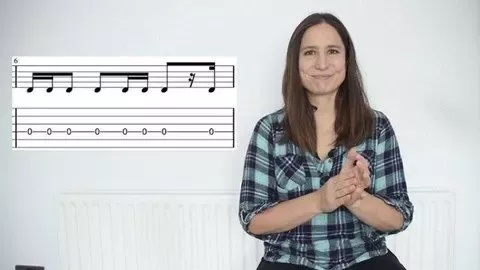Music Theory Learn Read Rhythm TUTORiAL
MP4 | Video: h264, 1280×720 | Audio: AAC, 48 KHz
Language: English | Size: 1.88 GB | Duration: 1h 53m
Using the metronome learn how to read and clap any rhythm, how to count and master them to be right on time
What you’ll learn
Learn how to read rhythm for any instruments
You will learn the duration of the notes and how to clap and count them
Working with the metronome, also the differences with 2-3-4 beats per beat
The course will get very challenging in the end, and you will be able to read and clap complicated rhythms
Requirements
Have a metronome, either online, as a phone app or a physical one.
Description
Years ago, my first music teacher told me that my poor sense of rhythm would probably prevent me from ever becoming a successful musician. Now I make my living as a rhythm guitarist.How do you count time in music? Are you in time when you play your songs? Do you want to sound exactly like the music you’re learning?This course, which includes 40 videos and 14 exercises, will provide you with an easy method for counting time in music; teach you how to use the metronome as a practice aid; and show you how to change rhythm within a beat. If you struggle to stay on the beat, the exercises introduced here are a mini-course in how to maintain the rhythmic pulse. If you feel that you have a terrible sense of rhythm, I can assure you that, like any other music-related topic, rhythmic sense is something which can be learned. With the exercises in this course, you can master off-beats, triplets, and the ability to count any rhythm in rock-steady time.Want to develop your musicality? Learning an instrument and want to sound really good when you play it?For all of the above, a highly-developed sense of rhythm is crucial! This course will guide you from the very beginning in: how to use the metronome; how to develop your sense of rhythm through clapping; how to recognize a time signature and determine the time values of notes and rests; how to count eighth-notes, triplets, sixteenth-notes and dotted notes.Although the first few exercises are very easy and basic in nature, the material becomes progressively more difficult as each new level is presented. By the end of the 7th level, you will find that you are practicing some exercises which are very challenging to clap and count.In this course you will learn:How to remain in time, learning how to change rhythm within a beat.How to count the off-beat, the triplets, or 16th notes etc.How to clap and count music.14 exercises and 7 difficulty levels to help you become a “rhythm master”I am a Spanish/Flamenco guitarist. In the type of music which I play, it is extremely important to remain in time, and to be able play complex rhythms. Furthermore, if you plan to play with other people or in a band, everyone involved needs to be able to maintain the same and consistent rhythm. So, for anyone contemplating a future in music, the material covered in this course is essential.If you are playing an instrument you will almost certainly have to learn how to read rhythm, and the challenging material in this course will reinforce your musical knowledge about rhythm in traditional music notation.Whether you’re a beginner seeking to unlock your natural rhythm, or an experienced player looking to resolve timing issues when playing your instrument – improve your rhythm with me and start your course today!
Who this course is for
Beginner music students, who want to master reading rhythm for their instruments
Please REPORT in Comment Broken Links


